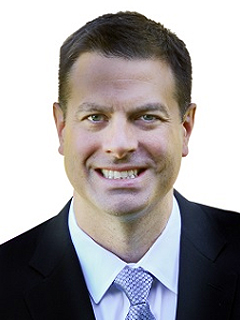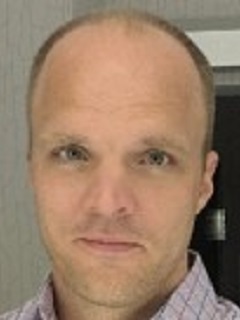Your employees are digitally connected all the time, whether by social media or business applications. It’s becoming imperative for organizations to meet employees in this virtual world with various digital tools to interact in a natural and intuitive way. One example is the collaboration platform Slack, which offers employees a single engagement layer with a familiar, conversational user experience. The result? Greater productivity and increased employee satisfaction.
Slack improved general productivity for companies, totaling $2.1 million in savings. (Source)
For C-suite executives, this reimagining of the employee experience (EX) is not only exciting, but also bottom-line critical. The pursuit, acquisition, and retention of talent is crucial for organizations to succeed in this new digital-first era of work. A KPMG Insights from the American worker survey found that 62 percent of American workers report that the demands of their jobs have increased over the past year. That same survey reports that companies have invested millions of dollars in new technologies to streamline processes, but 58 percent of respondents say their personal productivity has not changed or has become worse. This highlights the fact that all the productivity tools in the world won’t improve EX unless they’re readily available and seamlessly integrated into a platform like Slack to reduce context switching.
Whether through chatbots using native language query or live conversations with fellow coworkers, employees want a unified EX platform where they can access company policies, processes, or even their personal health insurance plans. And they want it whenever they require it—through whatever digital mode they prefer (desktop browser, mobile app, etc.). As tech-empowered consumers, employees expect that same level of immediacy, personalization, and expediency when it comes to how they work.
To deliver those singular “moments that matter” to job seekers, new hires, or even long-time employees seeking new opportunities to learn and move, leaders must think, design, build, and operate differently. It may be the difference between resignation, retention, and re-engagement.
Think differently
Enhanced EX comes from taking a human-centered approach where the full spectrum of Human Resources functionality, tools, and systems are integrated to curate a candidate’s or employee’s individual journey. The primary concern is meeting the employee’s needs; the technology utilized is secondary. Throughout an employee’s journey, they must utilize different tools to complete required processes like filing expense reports, submitting for vacation, booking travel, and more. Trying to navigate this series of isolated services, accessible from various screens and tools, ultimately hinders productivity and effectiveness. Leveraging a unified engagement layer like Slack to interact with these tools provides a consistent interface to maximize the utility of these disparate systems and improves the employee experience.
Design differently
Modernization starts by focusing on the employee personas and the lifecycle moments that define life-work journeys. At KPMG, we draw upon a catalog of high value “moments that matter” beyond the traditional employee lifecycle. By curating moments such as “I want to understand the options to improve my work/life balance” or “I know what is expected of me and how I can be successful,” we can then craft digital interaction models that envision the desired experience flow. These models help break down silos across service teams and technology while also highlighting key aspects of the nature of digital interactions that will resonate best with your workforce.
This is where many clients find a need for more robust, conversational language tools such as Slack that connect the corporate culture to each employee role. Widely accepted technologies where form and function align with these experiences can accelerate workplace use as well as enhance and assess each action by utilizing artificial intelligence and advanced analytics.
Build differently
Building great experiences requires being people-centric, not system-centric. Work-life balance is important to employees, especially hybrid workers, so it is essential to deliver curated, tailored content within the flow of work. Asking employees to inherently know which siloed back-office system to access wastes their time and leads to productivity loss. Workflows should reflect the employee experience along every step of their employment journey. Tools are incorporated to foster greater self-reliance, integrated collaboration, and shorter resolution times. For example, Slack accelerates the learning curve as an intuitive, natural language interface (adopted actively by tens of millions of people who use it worldwide). Integrating access to information and transactional systems can reduce costly back-office processing by utilizing channels, chatbots, workflows, and huddles. Slack becomes a central engagement layer that seamlessly integrates with existing knowledge base, case management, identity provisioning, and data visualization platform investments. The resulting experience translates into greater efficiency at onboarding, supporting, and developing an employee.
Operate differently
If you build it, the outcomes you desire won’t necessarily come. To elevate your EX, make a strategic investment in modernizing and digitizing your back-office capabilities. Shape the workforce through planning and analyzing data. Use automation and analytics to derive insights that enrich the workplace experience. Position learning in the flow of work with education as a service. Help ensure a continuum of good policies and processes through centers of excellence. Continue to be a leadership advocate for the digital EX as the foundational tenet of your ongoing digital transformation.
Everyone has a talent. What is your talent management strategy to digitally transform your business?
A 2021 Harris Poll commissioned by Fast Company found that more than half of U.S. workers were considering a job change. Nearly 44 percent had actual plans to make that change, a trend popularly known as The Great Resignation. We know those numbers are striking fear in many enterprises and organizations worldwide as the cost to replace an employee, according to one study, is 33 percent of that employee’s annual salary.
A digitally transformed back office delivers an enriched, satisfying, and empowering employee experience throughout the employee lifecycle. By focusing on the holistic experience first, it can also be a catalyst for engaging and reengaging the skills and people essential to achieving successful strategic and financial outcomes. By seamlessly embedding popular tools such as Slack into your back-office architecture, you can simplify what is often overly complicated: the ability to connect to resources, collect relevant information, and complete tasks all in the flow of work. Now is the time to be the change that makes these moments matter.
Explore more
Meet our team



